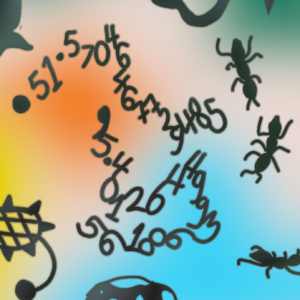Site drawing from GPS tracking to architecture: Difference between revisions
(Created page with "{{Event |Name=Site drawing from GPS tracking to architecture |Location=Het Wilde Weg |Date=2024/07/23 |Time=10:00—17:00 |PeopleOrganisations=Anton Rippon, Michael Caplan |Type=HDSC2024 |Web=Yes |Print=No }} 300px The practice is based on a modern GPS receiver fixed to a telescopic stick, which can track the movements of a participant within a site. Similar to a pen on paper, the movement of the GPS receiver is recorded in 3 dimensions....") |
No edit summary |
||
| Line 28: | Line 28: | ||
''Michael Caplan is software engineer from the US'' | ''Michael Caplan is software engineer from the US'' | ||
<gallery> | |||
DSC06997.JPG| | |||
DSC06934.JPG| | |||
DSC06955.JPG| | |||
DSC06956.JPG| | |||
DSC06959.JPG| | |||
DSC06980.JPG| | |||
DSC06981.JPG| | |||
DSC07000.JPG| | |||
DSC07003.JPG| | |||
DSC07012.JPG| | |||
</gallery> | |||
Revision as of 21:07, 31 October 2024
| Site drawing from GPS tracking to architecture | |
|---|---|
| Name | Site drawing from GPS tracking to architecture |
| Location | Het Wilde Weg |
| Date | 2024/07/23 |
| Time | 10:00—17:00 |
| PeopleOrganisations | Anton Rippon, Michael Caplan |
| Type | HDSC2024 |
| Web | Yes |
| No | |
The practice is based on a modern GPS receiver fixed to a telescopic stick, which can track the movements of a participant within a site.
Similar to a pen on paper, the movement of the GPS receiver is recorded in 3 dimensions. This allows us to design a 3D model project with (possible) centimeter accuracy.
Traditional digital design is based on creating a simulation based on extracting data from satellite views, cadastral plans, or other data sources. Then the design uses the virtual site as context. Instead, in-situ digital design uses tools in the field to create the design based on our real experience of the site. The participant, the weather, the amount of satellites received, the site specificity and the aim of the drawing are all components manifested within the drawing.
We believe that using GPS for in-situ architecture in engages us in the middle of a double subversion. First, we subvert the extra-planetary scale of GPS by using a system designed to see the whole globe at once to create artifacts that are only legible relative to the context they are created in. Second, we subvert the destructive origins of satellite navigation - marking locations for precision guided weaponry - by using the technology to create imagined futures rather than using it to destroy the existing one.
- duration: 2 x 3 hours
- number of participants: 1-15 per session
- materials / tools: pens & paper to provide, gps tool - we provide, drone - we provide, 1 laptop-we provide
- what do participants need to prepare: install SWMaps app on your phones, be ready to walk around, bring a laptop with 3d modeling capablilities to the second session
Anton Ripon is a designer specialized in spaces, modular approachs / research and student in Master course in Geo-design at DAE (Netherlands)
Michael Caplan is software engineer from the US










